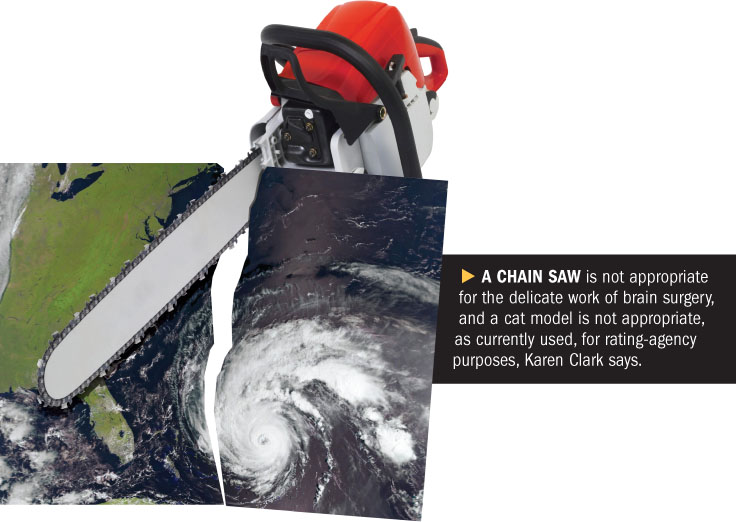The rating agencies are not making consistent comparisons across companies with respect to catastrophe risk.
A.M. Best, for example, bases its ratings on information from different catastrophe models, different model versions and without any independent checks on exposure-data quality.
 As is well documented, model- and exposure-data quality differences typically lead to loss estimates that vary by 100 to 200 percent or more. While A.M. Best and the other rating agencies claim to make adjustments for these differences, it is simply not possible to know how much the numbers will change when different models or different model versions are used, particularly for localized and specialized portfolios of property business.
As is well documented, model- and exposure-data quality differences typically lead to loss estimates that vary by 100 to 200 percent or more. While A.M. Best and the other rating agencies claim to make adjustments for these differences, it is simply not possible to know how much the numbers will change when different models or different model versions are used, particularly for localized and specialized portfolios of property business.
Recommended For You
Want to continue reading?
Become a Free PropertyCasualty360 Digital Reader
Your access to unlimited PropertyCasualty360 content isn’t changing.
Once you are an ALM digital member, you’ll receive:
- Breaking insurance news and analysis, on-site and via our newsletters and custom alerts
- Weekly Insurance Speak podcast featuring exclusive interviews with industry leaders
- Educational webcasts, white papers, and ebooks from industry thought leaders
- Critical converage of the employee benefits and financial advisory markets on our other ALM sites, BenefitsPRO and ThinkAdvisor
Already have an account? Sign In Now
© 2025 ALM Global, LLC, All Rights Reserved. Request academic re-use from www.copyright.com. All other uses, submit a request to [email protected]. For more information visit Asset & Logo Licensing.





